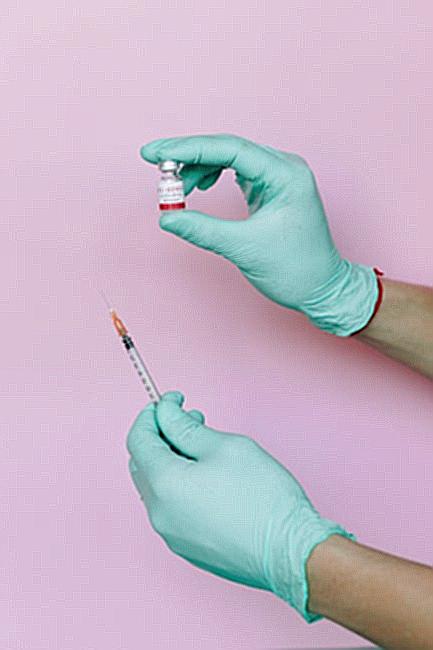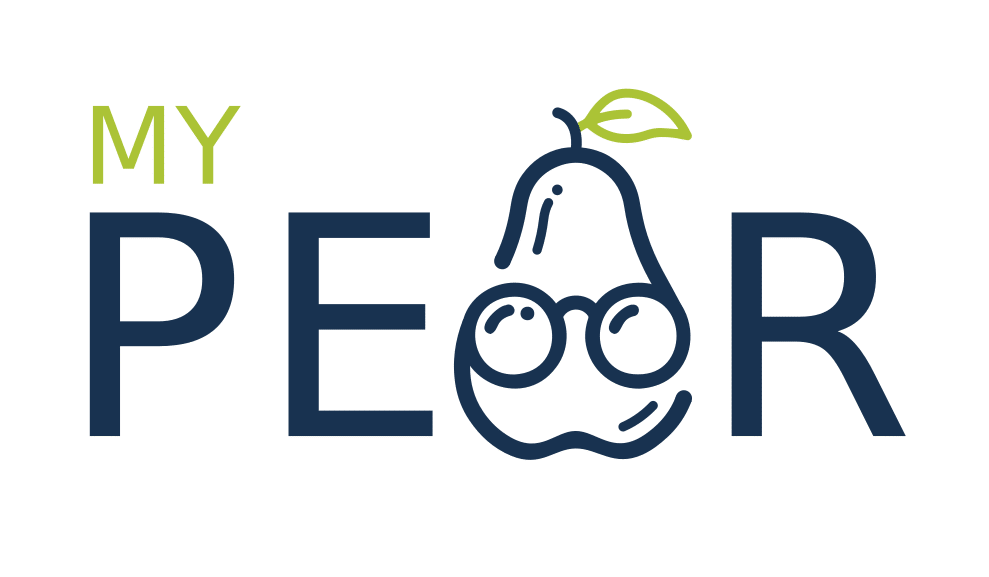Eye care is an essential component of overall health and well-being. The eyes are an integral part of the human system, responsible for vision and visual perception. As such, they require special attention and care. This is where Eye Care OHIP comes in. It is a program that provides coverage and financial assistance for various eye care services to eligible Ontario residents.
The program covers services related to eye examinations, where the patient’s eyes are checked for visual acuity, refractive errors, and other disorders such as cataracts, glaucoma, and macular degeneration. OHIP also covers optometric services, such as contact lens fittings, low vision aids, and visual training.
Eye Care OHIP is an important initiative because it helps provide access to essential eye care services for those who would otherwise not be able to afford it. It is especially beneficial for senior citizens, low-income individuals, and those with disabilities, who may require frequent or ongoing eye care maintenance.
The aim of Eye Care OHIP is to promote good eye health and prevent avoidable blindness in Ontario. By providing financial assistance for essential eye care services, it helps ensure that patients receive timely treatment and management of their eye conditions. This is important because early detection and treatment can often prevent the progression of eye diseases and improve visual outcomes for patients. Overall, Eye Care OHIP is an instrumental program that contributes to the health and well-being of Ontario’s residents.
What Is Ohip-Covered Eye Care?
OHIP (Ontario Health Insurance Plan) is a government-funded healthcare program that provides medical services to residents of Ontario, Canada. OHIP covers medically necessary eye care services provided by ophthalmologists and optometrists in the province.
OHIP-covered eye care services include routine eye exams, diagnostic tests, and treatments for eye diseases and conditions. OHIP also provides coverage for some surgical procedures related to eye health.
How Much Does Ohip Cover For Eye Exams?
OHIP covers one major eye exam every 12 months for individuals between the ages of 20 and 64. For seniors over the age of 65, OHIP covers one major eye exam every 12 months and one follow-up visit every six months.
During an OHIP-covered eye exam, the optometrist or ophthalmologist will conduct a comprehensive assessment of your vision and general eye health, including evaluating your visual acuity, visual field, and eye pressure.
What Eye Care Services Are Covered By Ohip?
OHIP covers a wide range of medically necessary eye care services, including:
– Routine eye exams
– Diagnostic tests (such as visual field tests, corneal topography, and retinal imaging)
– Eye disease diagnosis and management (such as glaucoma, cataracts, and diabetic retinopathy)
– Treatment for eye infections, injuries, and inflammation
– Prescription medications for eye conditions
– Select surgical procedures, such as cataract surgery and treatments for retinal tears or detachments
Most services related to eye health are covered by OHIP, but some elective procedures or services may not be, such as cosmetic surgery for drooping eyelids.
How Often Are Eye Exams Covered By Ohip?
OHIP covers one major eye exam every 12 months for individuals between the ages of 20 and 64. For seniors over the age of 65, OHIP covers one major eye exam every 12 months and one follow-up visit every six months.
However, additional eye exams may be covered in certain circumstances, such as if you have a new eye condition or if you are experiencing a change in your vision.
Are Glasses And Contacts Covered By Ohip?
OHIP does not cover the cost of glasses or contact lenses. However, some individuals may be eligible for assistance with the cost of these materials through other programs or insurance plans.
For example, individuals with low incomes or on social assistance may be eligible for coverage for vision care and materials through the Ontario Works or Ontario Disability Support Program.
How Do I Qualify For Ohip-Covered Eye Exams?

All Ontario residents are eligible for OHIP coverage, including coverage for medically necessary eye exams. To receive OHIP-covered eye care, you will need a referral from a healthcare provider, such as your family doctor or optometrist.
If you are under the age of 20 or over the age of 64, you may still be eligible for coverage for medically necessary eye care services, but these services will not be covered under OHIP. Instead, you may be eligible for coverage under other programs or insurance plans.
Can I Use My Ohip Card For Eye Exams?
Yes, you can use your OHIP card to access covered eye exams and other medically necessary eye care services. Make sure to bring your OHIP card with you to your appointment, as well as any other insurance information or health information that may be relevant to your care.
How Do I Find An Ohip-Covered Eye Doctor?
You can find an OHIP-covered optometrist or ophthalmologist by searching through the College of Optometrists of Ontario or the College of Physicians and Surgeons of Ontario directories. These directories list healthcare professionals who are registered and licensed to provide eye care services in the province.
You can also ask your family doctor or optometrist for a referral to an OHIP-covered eye doctor.
What Is The Cost Of Ohip-Covered Eye Surgery?
The cost of OHIP-covered eye surgery depends on the specific procedure being performed. However, in most cases, the cost of the surgery will be covered by OHIP.
Some examples of OHIP-covered eye surgeries include cataract surgery, treatments for retinal tears or detachments, and corneal transplants. However, some elective surgeries, such as cosmetic eyelid surgery, are not covered by OHIP.
Is Laser Eye Surgery Covered By Ohip?
In most cases, laser eye surgery for vision correction, such as LASIK or PRK, is not covered by OHIP. However, there may be exceptions for individuals with certain medical conditions or who have experienced refractive changes as a result of eye surgery.
It is best to speak with an eye care professional to determine if you are eligible for OHIP coverage for laser eye surgery.
What Is The Ohip Age Limit For Eye Care Coverage?
The age limit for OHIP-covered eye care depends on the specific service being provided. OHIP covers one major eye exam every 12 months for individuals between the ages of 20 and 64. For seniors over the age of 65, OHIP covers one major eye exam every 12 months and one follow-up visit every six months.
However, individuals under the age of 20 or over the age of 64 may still be eligible for coverage for medically necessary eye care services, but these services will not be covered under OHIP. Instead, they may be eligible for coverage under other programs or insurance plans.
Does Ohip Cover Optometrist Visits?
Yes, OHIP covers optometrist visits for medically necessary eye care services, such as routine eye exams, diagnostic tests, and eye disease management. OHIP also covers select surgical procedures related to eye health, such as cataract surgery and treatments for retinal tears or detachments.
However, OHIP does not cover the cost of glasses or contact lenses, which may be prescribed by an optometrist.
What Is The Difference Between Ohip-Covered And Uninsured Eye Care Services?
OHIP-covered eye care services are those that are deemed medically necessary for the diagnosis or management of an eye condition or disease. These services are provided by licensed ophthalmologists or optometrists, and the cost of the services is covered by the government.
Uninsured eye care services, on the other hand, are those that are not considered medically necessary or that are not covered by OHIP. These may include elective procedures, cosmetic surgeries, or non-medical treatments for vision correction.
Can Ohip Be Used For Emergency Eye Care?

Yes, OHIP can be used for emergency eye care services, such as treatment for eye infections, injuries, or inflammation. If you experience a serious eye injury or condition, it is important to seek urgent medical attention to protect your vision and prevent further damage.
What Are The Ohip-Covered Treatments For Eye Diseases?
OHIP covers a range of treatments for eye diseases, including:
– Medications for glaucoma, diabetic retinopathy, and other eye conditions
– Laser treatments for retinal tears or detachment
– Corneal transplants
– Cataract surgery
– Treatment for macular degeneration
The specific treatments that are covered by OHIP may vary depending on your individual circumstances and the severity of your condition. It is important to speak with an eye care professional to determine the best treatment options for your needs.

Conclusion
In conclusion, Eye Care OHIP is an essential government-funded health service that exists to provide access to eye care services for all eligible Ontario residents. It ensures that people of all ages have access to appropriate eye care services and equipment to maintain their eye health.
Over the years, OHIP has made significant strides in expanding the scope and reach of eye care services across Ontario. It has introduced new programs that have made eye care services more accessible to remote and rural communities as well as people with low-income.
Through OHIP, Ontario residents have access to expert eye care professionals who diagnose and treat a variety of eye conditions such as cataracts, glaucoma, and macular degeneration. OHIP also covers the cost of vision correction devices such as eyeglasses and contact lenses for eligible residents.
In summary, Eye Care OHIP is a vital program that helps ensure the vision health of Ontarians. The availability of expert care, financial coverage for vision correction, and increased access for rural and low-income individuals make this program a crucial part of Ontario’s health system. It is essential that the government continues to prioritize and support this program to ensure that all residents have access to the eye care services they need.
OHIP-covered eye care services include routine eye exams, diagnostic tests, and treatments for eye diseases and conditions. OHIP also provides coverage for some surgical procedures related to eye health.
"}},{"@type": "Question", "name": "How Much Does Ohip Cover For Eye Exams?","acceptedAnswer": {"@type": "Answer","text": "OHIP covers one major eye exam every 12 months for individuals between the ages of 20 and 64. For seniors over the age of 65, OHIP covers one major eye exam every 12 months and one follow-up visit every six months.
During an OHIP-covered eye exam, the optometrist or ophthalmologist will conduct a comprehensive assessment of your vision and general eye health, including evaluating your visual acuity, visual field, and eye pressure.
"}},{"@type": "Question", "name": "What Eye Care Services Are Covered By Ohip?","acceptedAnswer": {"@type": "Answer","text": "OHIP covers a wide range of medically necessary eye care services, including:
- Routine eye exams - Diagnostic tests (such as visual field tests, corneal topography, and retinal imaging) - Eye disease diagnosis and management (such as glaucoma, cataracts, and diabetic retinopathy) - Treatment for eye infections, injuries, and inflammation - Prescription medications for eye conditions - Select surgical procedures, such as cataract surgery and treatments for retinal tears or detachments
Most services related to eye health are covered by OHIP, but some elective procedures or services may not be, such as cosmetic surgery for drooping eyelids.
"}},{"@type": "Question", "name": "How Often Are Eye Exams Covered By Ohip?","acceptedAnswer": {"@type": "Answer","text": "OHIP covers one major eye exam every 12 months for individuals between the ages of 20 and 64. For seniors over the age of 65, OHIP covers one major eye exam every 12 months and one follow-up visit every six months.
However, additional eye exams may be covered in certain circumstances, such as if you have a new eye condition or if you are experiencing a change in your vision.
"}},{"@type": "Question", "name": "Are Glasses And Contacts Covered By Ohip?","acceptedAnswer": {"@type": "Answer","text": "OHIP does not cover the cost of glasses or contact lenses. However, some individuals may be eligible for assistance with the cost of these materials through other programs or insurance plans.
For example, individuals with low incomes or on social assistance may be eligible for coverage for vision care and materials through the Ontario Works or Ontario Disability Support Program.
"}},{"@type": "Question", "name": "How Do I Qualify For Ohip-Covered Eye Exams?","acceptedAnswer": {"@type": "Answer","text": "
All Ontario residents are eligible for OHIP coverage, including coverage for medically necessary eye exams. To receive OHIP-covered eye care, you will need a referral from a healthcare provider, such as your family doctor or optometrist.
If you are under the age of 20 or over the age of 64, you may still be eligible for coverage for medically necessary eye care services, but these services will not be covered under OHIP. Instead, you may be eligible for coverage under other programs or insurance plans.
"}},{"@type": "Question", "name": "Can I Use My Ohip Card For Eye Exams?","acceptedAnswer": {"@type": "Answer","text": "Yes, you can use your OHIP card to access covered eye exams and other medically necessary eye care services. Make sure to bring your OHIP card with you to your appointment, as well as any other insurance information or health information that may be relevant to your care.
"}},{"@type": "Question", "name": "How Do I Find An Ohip-Covered Eye Doctor?","acceptedAnswer": {"@type": "Answer","text": "You can find an OHIP-covered optometrist or ophthalmologist by searching through the College of Optometrists of Ontario or the College of Physicians and Surgeons of Ontario directories. These directories list healthcare professionals who are registered and licensed to provide eye care services in the province.
You can also ask your family doctor or optometrist for a referral to an OHIP-covered eye doctor.
"}},{"@type": "Question", "name": "What Is The Cost Of Ohip-Covered Eye Surgery?","acceptedAnswer": {"@type": "Answer","text": "The cost of OHIP-covered eye surgery depends on the specific procedure being performed. However, in most cases, the cost of the surgery will be covered by OHIP.
Some examples of OHIP-covered eye surgeries include cataract surgery, treatments for retinal tears or detachments, and corneal transplants. However, some elective surgeries, such as cosmetic eyelid surgery, are not covered by OHIP.
"}},{"@type": "Question", "name": "Is Laser Eye Surgery Covered By Ohip?","acceptedAnswer": {"@type": "Answer","text": "In most cases, laser eye surgery for vision correction, such as LASIK or PRK, is not covered by OHIP. However, there may be exceptions for individuals with certain medical conditions or who have experienced refractive changes as a result of eye surgery.
It is best to speak with an eye care professional to determine if you are eligible for OHIP coverage for laser eye surgery.
"}},{"@type": "Question", "name": "What Is The Ohip Age Limit For Eye Care Coverage?","acceptedAnswer": {"@type": "Answer","text": "The age limit for OHIP-covered eye care depends on the specific service being provided. OHIP covers one major eye exam every 12 months for individuals between the ages of 20 and 64. For seniors over the age of 65, OHIP covers one major eye exam every 12 months and one follow-up visit every six months.
However, individuals under the age of 20 or over the age of 64 may still be eligible for coverage for medically necessary eye care services, but these services will not be covered under OHIP. Instead, they may be eligible for coverage under other programs or insurance plans.
"}},{"@type": "Question", "name": "Does Ohip Cover Optometrist Visits?","acceptedAnswer": {"@type": "Answer","text": "Yes, OHIP covers optometrist visits for medically necessary eye care services, such as routine eye exams, diagnostic tests, and eye disease management. OHIP also covers select surgical procedures related to eye health, such as cataract surgery and treatments for retinal tears or detachments.
However, OHIP does not cover the cost of glasses or contact lenses, which may be prescribed by an optometrist.
"}},{"@type": "Question", "name": "What Is The Difference Between Ohip-Covered And Uninsured Eye Care Services?","acceptedAnswer": {"@type": "Answer","text": "OHIP-covered eye care services are those that are deemed medically necessary for the diagnosis or management of an eye condition or disease. These services are provided by licensed ophthalmologists or optometrists, and the cost of the services is covered by the government.
Uninsured eye care services, on the other hand, are those that are not considered medically necessary or that are not covered by OHIP. These may include elective procedures, cosmetic surgeries, or non-medical treatments for vision correction.
"}},{"@type": "Question", "name": "Can Ohip Be Used For Emergency Eye Care?","acceptedAnswer": {"@type": "Answer","text": "
Yes, OHIP can be used for emergency eye care services, such as treatment for eye infections, injuries, or inflammation. If you experience a serious eye injury or condition, it is important to seek urgent medical attention to protect your vision and prevent further damage.
"}},{"@type": "Question", "name": "What Are The Ohip-Covered Treatments For Eye Diseases?","acceptedAnswer": {"@type": "Answer","text": "OHIP covers a range of treatments for eye diseases, including:
- Medications for glaucoma, diabetic retinopathy, and other eye conditions - Laser treatments for retinal tears or detachment - Corneal transplants - Cataract surgery - Treatment for macular degeneration
The specific treatments that are covered by OHIP may vary depending on your individual circumstances and the severity of your condition. It is important to speak with an eye care professional to determine the best treatment options for your needs.
"}},{"@type": "Question", "name": "Conclusion","acceptedAnswer": {"@type": "Answer","text": "In conclusion, Eye Care OHIP is an essential government-funded health service that exists to provide access to eye care services for all eligible Ontario residents. It ensures that people of all ages have access to appropriate eye care services and equipment to maintain their eye health.
Over the years, OHIP has made significant strides in expanding the scope and reach of eye care services across Ontario. It has introduced new programs that have made eye care services more accessible to remote and rural communities as well as people with low-income.
Through OHIP, Ontario residents have access to expert eye care professionals who diagnose and treat a variety of eye conditions such as cataracts, glaucoma, and macular degeneration. OHIP also covers the cost of vision correction devices such as eyeglasses and contact lenses for eligible residents.
In summary, Eye Care OHIP is a vital program that helps ensure the vision health of Ontarians. The availability of expert care, financial coverage for vision correction, and increased access for rural and low-income individuals make this program a crucial part of Ontario's health system. It is essential that the government continues to prioritize and support this program to ensure that all residents have access to the eye care services they need. "}}]}



